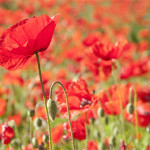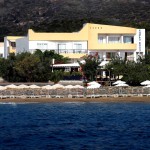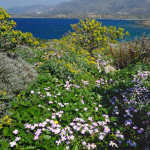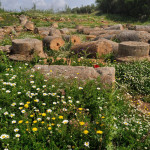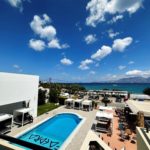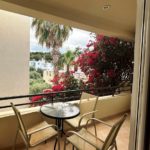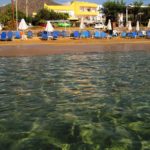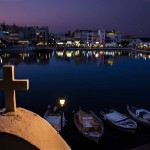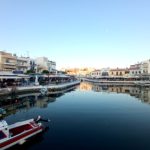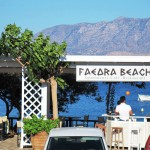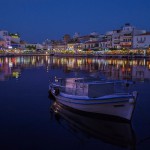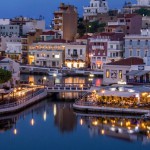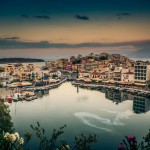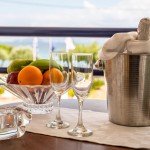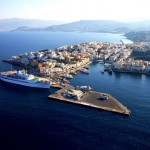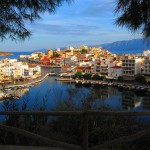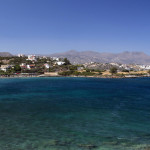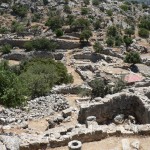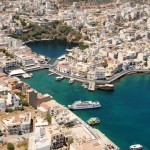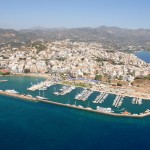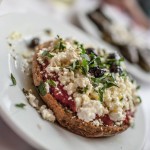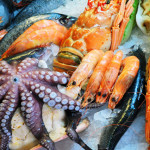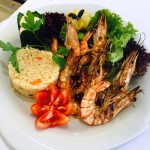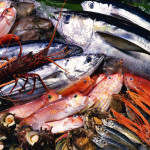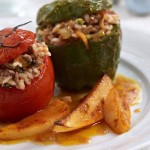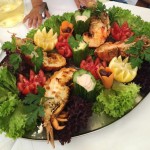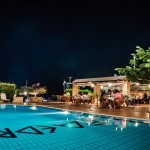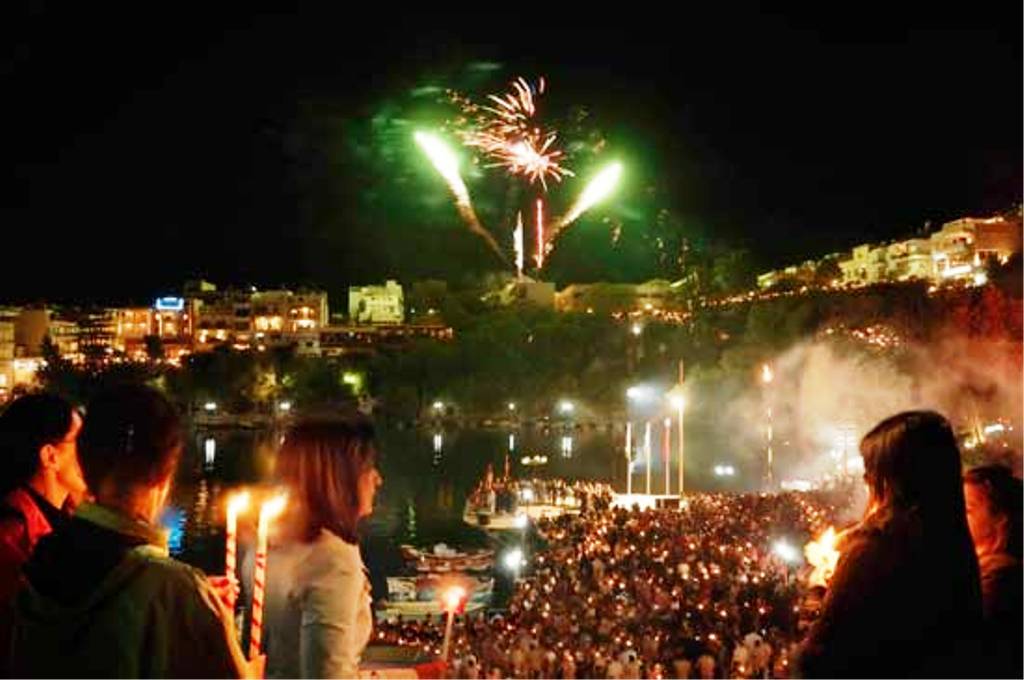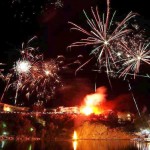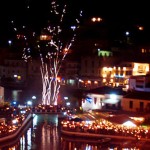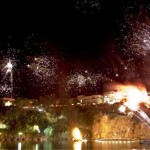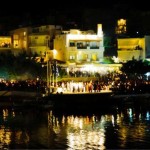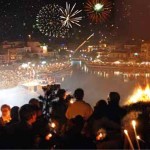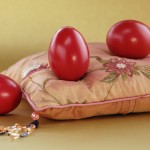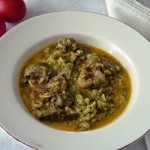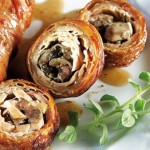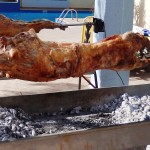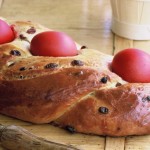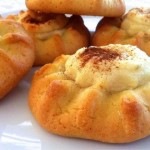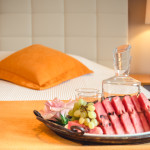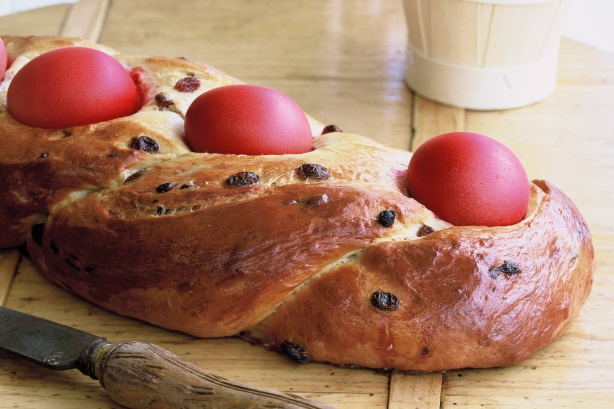Easter in Agios Nikolaos
The season of Spring is the perfect timing since Easter in Agios Nikolaos is a very special and unique experience and a pole of attraction for many travelers from all over the world.
Check in to a beautifully decorated room on half-board basis, and spent your night at the hotel and enjoy a delicious dinner and a bottle of wine laughing away the hours and talking about all the great things you will do in Lassithi prefecture.
The climate, mild, dry and sweet, without steep weather transitions throughout the year, is considered one of Europe’s most healthy. You can see green everywhere even in winter (thanks to the endless fields of olive trees). Spring projects the blooming almond trees among the dense vegetation with its diffused intoxicating elegant aroma, laying thick carpets of sour grass, bright red poppies, white lilies and many more wild flowers, covering fields and mountainsides, decorating ancient ruins, above the lacy coasts of the Cretan sea with the crystal clear water.
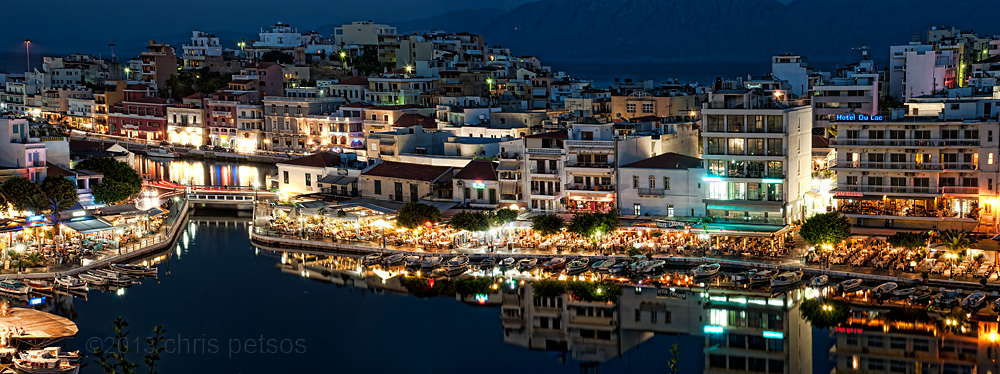
After a very good night’s sleep and a hearty breakfast at Faedra Beach Resort you can set off to explore the town of Agios Nikolaos. The cafés and restaurants there are the centre of social life and the hustle and bustle of this amazingly charming town. Just take the bus or a taxi to Agios Nikolaos town and stroll around the town, have coffee at the Voulismeni Lake a glass of ouzo and meze contemplating the breathtaking view.
On this bright Easter, you shouldn’t miss the grand Easter Concerts and Parades. Philharmonic orchestras surge in the streets of the town centre playing Byzantine melodies.
Take advantage of the good weather to get away from the crowded town centre and visit the countless villages (Kalo Horio, Prina, Kalamafka, Limnes, Neapoli, Plaka, ect.) around Faedra Beach Hotel and join the pure orthodox functions and feel the unity under the Cretan tradition.
There is also the Church of Profitis Ilias next to the hotel that participates to all this spiritual fest of the Holy week. Enjoy the hotel comfort and listen the devout Church bell tolls next to the sea…
Discover the monasteries on the mountains– one of the best sites of Lassithi and places of truly unique beauty.
Join the half board menu at Faedra Beach Resort that includes all the traditional Greek recipes of the holy week and a variety of sea food selections.
At Holy Saturday midnight, you can attend the Resurrection Mass. The priests from all churches in town ascend the platform erected at the Lake. At the stroke of midnight, announcing Easter Day, “Christos Anesti” ( Christ is Risen) is sung by the choir of the priests while the people holding their candles sing along. And the fireworks set off! The town of Agios Nikolaos is then transformed into a stage of dancing and high spirits as the resurrection ceremony gets into full swing.
It’s not worth hitting the clubs much before 1am and the serious stuff doesn’t take off until much later. Then the drinking, dancing and degenerate behaviour continues till dawn. New pubs and clubs come and go but there’s always a plentiful supply of Greek bars, rock bars, cocktail bars, Rakadika (a kind of traditional kafeneio and in most cases a combination of kafeneio and tavern), lounge bars, techno, RnB and whatever else you want from a wild night out.
Greek Easter Cooking
For the Greeks, Easter is regarded as the greatest celebration of the year. The festive pascal menu includes a wide variety of traditional foods such as magiritsa (Easter Midnight Soup), ovelias (seasoned lamb or goat on the skew), kokoretsi (seasoned lamb offal wrapped in chopped intestines), tsoureki (a kind of brioche-fluffy easter bread) and kalitsounia in Crete (easter cheese pies) and, of course, the easter eggs. They are mostly painted red on Holy Thursday and symbolise Christ’s blood. However, other colours can be used such as green, blue and yellow to symbolise springtime and the fertility of nature. During the Midnight Easter Supper and the Easter Lunch each person chooses an egg and taps the egg of another person with one’s own egg intending to break the other’s,. The one whose egg survives and remains intact is considered to be lucky.
And these are only a few of the traditional Greek and Cretan dishes which compose the menu at the hotel on Easter Day lunch apart from kokoretsi and lamb.
Kokoretsi is a meal that is traditionally made and served at Easter, along with Lamb. It is made from the internal organs of the lamb, arranged on a skewer and cooked over the hot coals along with the lamb on Easter Sunday.
Spent your last day in Agios Nikolaos walking along the beach. and stroll around the town, have coffee at the Voulismeni Lake a glass of ouzo and meze contemplating the breathtaking view and return back home still filled with the enchanting aura of Crete.
Testimonials
Why dye the eggs red during Easter
For Orthodox Christians, the egg symbolizes the empty rock tomb from which Jesus Christ arose after Ηis Crucifixion. It is a universal means of greeting and presentation for Christian believers, while also foretelling the eternal life experience awaiting true believers after death.A symbol of fertility and immortality among all nations and eras of the human civilization, the egg appears to be empty within, but life spreads out of it when a bird hatches from it. According to heathen cosmogonies, the original chaos of the world was contained in an egg, which broke into two halves, the one forming the sky and the other the earth.
But why dye the eggs red during Easter?
Red is the color of life and victory. The custom of the Easter egg originated amongst the early Christians of Mesopotamia, who stained eggs red in memory of the precious blood of Christ, who was on the cross for the salvation of all men.
The Christian Church officially adopted the custom, regarding the red eggs as a symbol of the resurrection. Most stories link Mary Magdalene, as well as other female figures, to the red Easter eggs custom.
Per Reverend Peter G. Kohanik’s book, “The Most Useful Knowledge for the Orthodox Russian-American Young People,” there exists a tradition which makes Mary Magdalene out to be the originator of the custom of using red eggs on Easter day. Magdalene went to Rome to preach the Gospel and appearing before the Emperor Tiberius, offered him a red egg, saying: CHRIST IS RISEN.” Tiberius, who was skeptical over the woman’s sayings, told Magdalene that if she was telling the truth, then his egg would turn red. At that point the egg had turned blood red, and so began her preaching.
Learning of this offering by Mary Magdalene, the early Christians imitated her, presenting each other with eggs. Hence, eggs began to be used by Christians in the earliest centuries as a symbol of the Resurrection of Christ and of the regeneration of Christians for a new and a better life along with it. The Russian monastery of Mary Magdalene in Jerusalem has a big fiasco depicting her presenting the Roman Emperor with a red egg.
A second story has it that Virgin Mary offered the Roman soldiers guarding her Son a basket full of eggs so that they would treat him well. While she was pleading for him, her tears fell on the eggs and they turned red.
A variation of the story has it that an unknown woman, who wouldn’t believe the news of Christ’s resurrection, said that she would believe it only when the eggs she had been holding turned red; miraculously, the eggs changed as soon as she spoke the words.
The Greek Orthodox tradition wants eggs to be dyed red on Holy Thursday. People believe that these eggs can last 40 days outside the refrigerator without going bad. Moreover, if a priest blesses the Holy Thursday eggs on Easter Sunday, then these can last for a year without going bad.
Holy Week
Holy MondayFor the Greek Orthodox Christians today is the first day of the Holy Week. Holy Monday services help us to understand Christ’s passage from death to life, and how each of us can also become free from sin and death. So we commemorate:
“The Hymn of the Bridegroom” is preparing us for Christ’s coming. The minister carries the icon of Christ the Bridegroom in procession. We behold Christ the Bridegroom bearing the marks of suffering, yet preparing a marriage Feast for us in God’s Kingdom. The Blessed Joseph (son of Jacob in the Old Testament) was thrown into a pit and sold into slavery by his brothers, and later became a powerful ruler.
Holy Tuesday
Holy Tuesday services urge us to be spiritually prepared to receive Christ. We should take this time to reflect on:
The Parable of the Ten Virgins. The maidens who filled their lamp with oil were prepared to receive the bridegroom. Those with empty lamps were shut out of the marriage feast. So each of us should light lives with faith and good works and be ready to receive Christ.
Our Readiness to meet Christ. This is the message of the hymn proclaiming: “Thy Bridal Chamber I see adorned, O my Saviour, but I have no wedding garment that I may enter. O Giver of Light, enlighten the vesture of my soul and save me.”Holy Wednesday
The sacred ceremony of the Mysterion of the Holy Unction takes place on this Wednesday evening, following an old custom. It is the evening of repentance, confession, and the remission of sins by the Lord, preparing the faithful to receive Holy Communion, usually the next day, Holy Thursday morning.Holy Unction is the Mysterion for cleansing sins and renewing the body and the spirit of the faithful. Holy Unction is one of the seven Sacraments of the Church, and it has its origin in the practice of the early Church as recorded in the Epistle of James (5:14-15). At the end of the service, the priest anoints the people with Holy Oil, the visible carrier of the Grace of God.
Holy Thursday
To take away our sins, Christ willingly endured spitting, scourging, buffeting, scorn, mocking, and purple robe; the reed, sponge, vinegar, nails, spear, and above all, the Cross and Death. The confession from the cross of the penitent thief, crucified with Christ, is celebrated. This service is long, but its content is dramatic and deeply moving for the devout Christian. Participation in the prayers and the historical sequence of the events, as related in the Gospels and hymns, provides a vivid foundation for the great events yet to come. Following are the references of the “Twelve Gospel”. These readings relate the last instructions of Christ to His disciples, the prophecy of the drama of the Cross, the dramatic prayer of Christ and His new commandment. The day should be devoted to reading the “Gospel of the Testament” of Christ which He left for all men. The Church services during Holy Week re-enact the events of this Gospel.
After the reading of the fifth Gospel comes the procession with the Crucifix around the church, while the priest chants the 15th antiphon: “Today is hung upon the Tree, He Who did hang the land in the midst of the waters.” A Crown of thorns crowns Him Who is King of Angels. He is wrapped about with the purple of mockery Who wrapped the Heavens with clouds. He received buffetings Who freed Adam in Jordan. He was transfixed with nails Who is the Bridegroom of the Church. He was pierced with a spear Who is the Son of the Virgin. We worship Thy Passion, O Christ. Show also unto us thy glorious Resurrection.”During the Procession, the faithful Christian kneels and prays for his spiritual welfare, imitating the thief on the Cross who confessed his faith and devotion to Christ. He then approaches and reverently kisses the Crucifix.Holy Friday
on Holy Friday. Being a Greek Orthodox I’ve never quite understood why Holy Friday is also called Good Friday. Certainly, it wasn’t a good day for Mary – Jesus’ mum. Her lamentations are heartbreaking
Ω γλυκύ μου έαρ γλυκύτατον μου τέκνον
(Oh my sweet offspring, my sweet child)
Virgin Mary suffered her son’s loss like an ordinary mother who mourns for her son’s passing. The king of kings, however, did not hesitate to wash his disciples’ feet just before his betrayal by Judas and his Crucifixion.
And while Jesus’ mother was lamenting, while He was still on the Cross, He did find the strength to whisper:
Πάτερ άφες αυτοίς, ου γαρ οίδασι τι ποιούσι
(Father, forgive them for they know not what they do)
When someone in our family dies, we often ask ourselves what their last words were. Most of us want to know if we really understood how much we loved them!
Shakespeare once wrote in his play Richard II…The tongues of dying men–Enforce attention like deep harmony–Where words are scarce–They are seldom spent in vain–For they breathe truth–That breathe their words in pain.
Jesus’ words in pain breathe truth and they should be a lesson of unconditional love.Holy Saturday – The Resurrection
On Saturday midnight, the life-giving Resurrection of our Lord and Savior Jesus Christ is celebrated. Before midnight, the Odes of Lamentation of the previous day are repeated. The Orthros of the Resurrection begins in complete darkness. The priest takes light from the vigil light and gives it to the faithful, who are holding candles. The priest sings: “Come ye and receive light from the unwaning life, and glorify Christ, who arose from the dead,” and all the people join him in singing this hymn again and again. From this moment, every Christian holds the Easter candle as a symbol of his vivid, deep faith in the Resurrection of Jesus Christ as Savior. In many churches, the priest leads the people outside the church, where he reads the Gospel which refers to the Angel’s statement: “He is Risen; He is not here.” (Mark 16:1-8)
Then comes the breathless moment as the people wait for the priest to start the hymn of Resurrection, which they join him in singing, repeatedly: “Christ has Risen from the dead, by death trampling upon Death, and has bestowed life upon those in the tombs.” From this moment, the entire service takes on a joyous Easter atmosphere. The hymns of the Odes and Praises of Resurrection which follow are of superb meaning and expression. The people confess, “It is the Day of Resurrection, let us be glorious, let us embrace one another and speak to those that hate us; let us forgive all things and so let us cry, Christ has arisen from the dead.” By this hymn, they admit that love of one’s fellowman is the solid foundation of the faith in the Resurrection of Christ.
The Divine Liturgy of St. John Chrysostomos is then officiated. At the end of the Liturgy, a part of the marvelous festival sermon of St. Chrysostomos is read, which calls upon the people to “Take part in this fair and radiant festival. Let no one be fearful of death, for the death of the Savior has set us free…O Death, where is thy sting? O Hades, where is Thy victory? Christ is Risen and Thou art overthrown. To Him be glory and power from all ages to all ages.”Easter Sunday
In Greece and Cyprus, Easter Sunday is a widely celebrated occasion. Lambs are roasted on a spit and the provision of wine is abundant. The roasted lamb is served in honour of Jesus Christ, who was sacrificed and rose again from the dead. Lamb is the most traditional Greek Easter food. Red-dyed eggs are cracked against each other and the person with the last remaining uncracked egg is said to have good luck. Easter Sunday is a time of festivity and people eat, sing and dance throughout the day. On this Holy Day, we greet each other by saying Χριστός Ανέστη (Christos Anesti) meaning Christ has risen and the reply is Αληθώς Ανέστη (Alithos Anesti) meaning He has truly risen.
Easter Sunday, they meet with family and friends to celebrate Christ’s victory over death. Upon greeting a friend or relative on this Holy Day you would say “Christos Aneste” meaning Christ has risen, the reply would be “Alethos Aneste” meaning “It is true, He has Risen.” The family will break the fast and celebrate with flowers and a wonderful dinner.On the islands of Crete children prepare a bonfire effigy of Judas Iscariot, who betrayed Jesus Christ, as described in the New Testament of the Bible. In the lead up to the bonfire event, people gather sticks and branches to prepare to burn the effigy.





